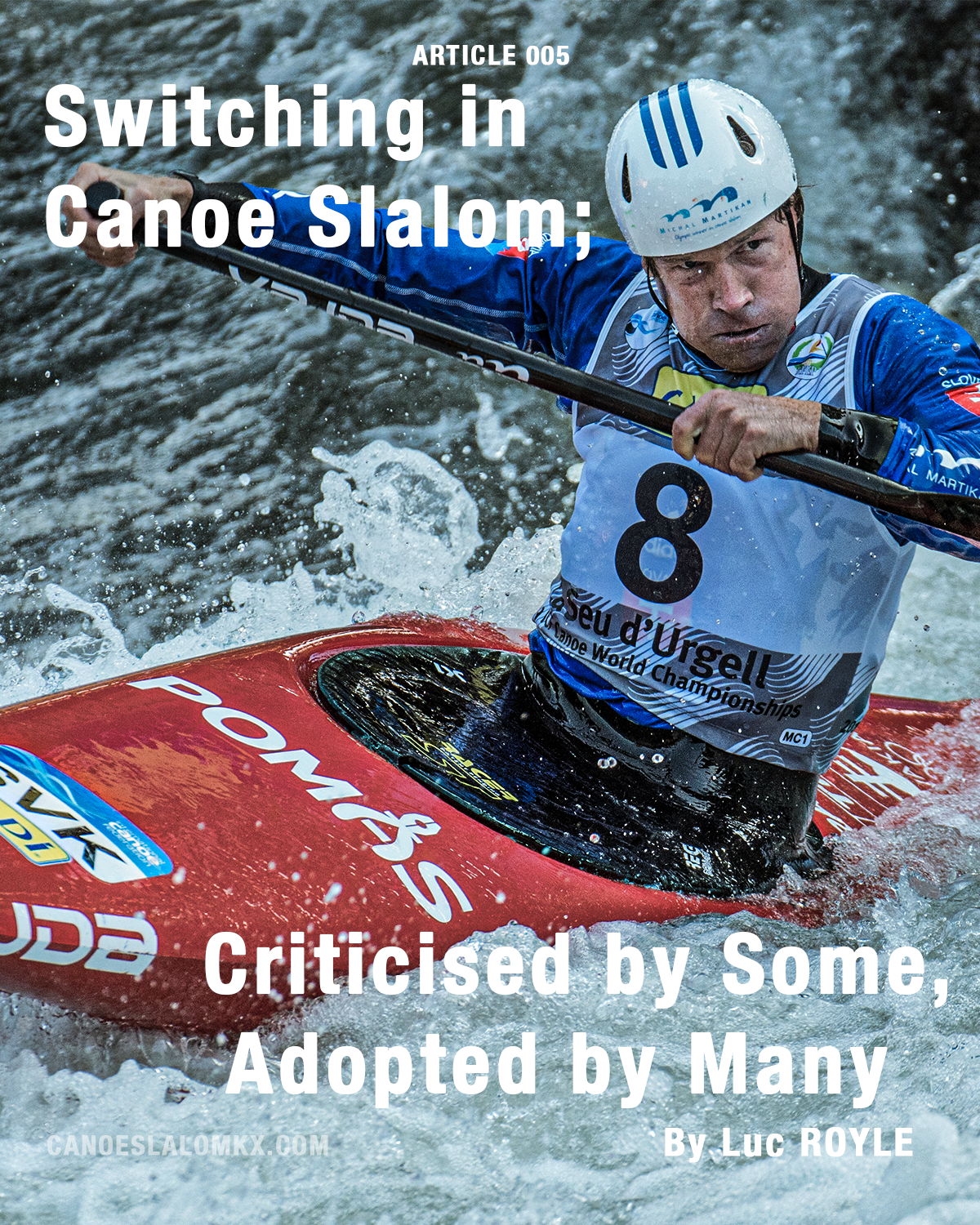At the 2020 Olympic Games, in Tokyo, Lukas Rohan became the first switching Canoe Singles Man (C1M) to medal at the Olympics using this technique. Simultaneously, Canoe Singles Women (C1W) debuted at the Olympic Games. All 3 of the C1W medallists used this switching technique in their medal winning runs. But how has this technique evolved over the history of Canoe Slalom?
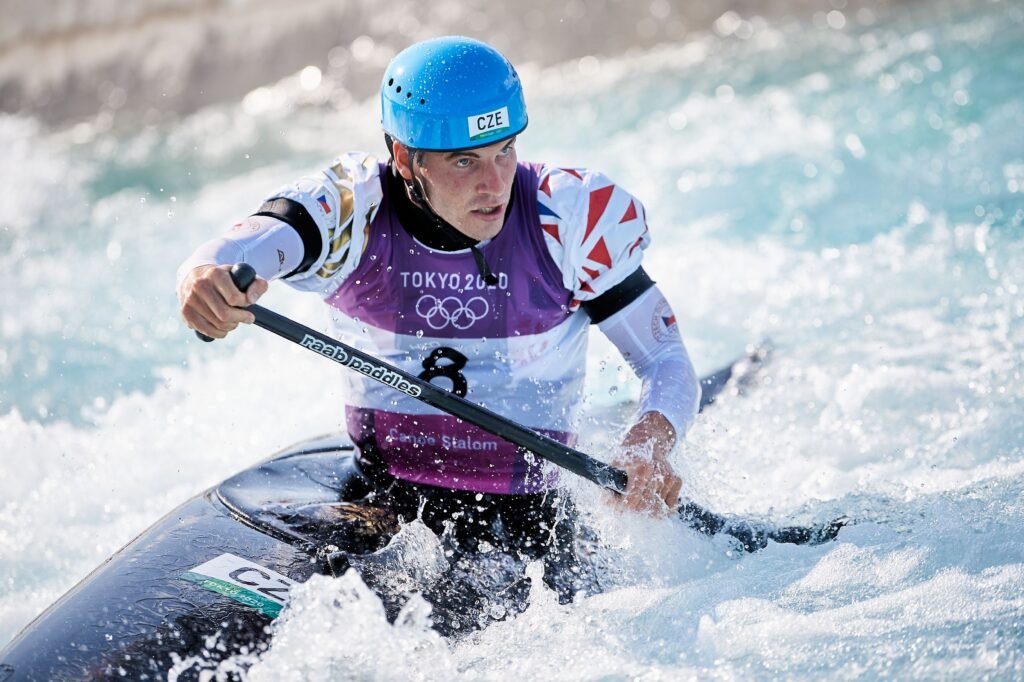
What is switching?
Switching is a stroke technique used by C1 (canoe singles) athletes across the world, predominately in the C1W category, but increasingly seen within the C1M category. It involves passing the paddle from one hand to the other, so the athlete can continue to paddle on their “on-side”. This can be used for both upstream gates and other gates sequences to avoid using a crossbow or “off-side stroke” as crossbows can sometimes be a slower method.
It is often easier and quicker to apply power and control the boat using the on-side stroke, and switching is a solution to be able to do this for some or all sequences on the course. However, this is not always the case, for example in particularly tight sequences there may not be time to perform an effective switch and reap the benefits of doing so. Furthermore, the more switches performed during the run, the more time the blade is spent out of the water and not propelling the boat forwards.
The history of switching in Canoe Slalom
Originating from the USA, switching was first seen in the late 1970’s. At the 1979 Canoe Slalom World Championships in Quebec, Canada, Bob Robinson (USA) won a bronze medal in the individual C1M category, using the switching technique in his medal-winning run. However, despite its success, the switching technique wasn’t widely adopted until the modern era with the introduction of the Canoe Singles Women category (C1W). Pioneers such as Olympic Champion Jessica Fox and Two Time World Champ Mallory Franklin have led the innovation, and continue do so in recent race series.
Conversely, the C1M category has been slow to adopt the switching technique. The first C1M World Champion in the modern era to win using the switching technique was Fabien Lefévre (USA) at the 2014 Canoe Slalom World Championships held in Deep Creek, Maryland, USA. The first C1M to win an Olympic medal was Lukas Rohan (CZE), winning a silver medal at the 2020 Tokyo Olympic Games. Despite slow adoption, the switch technique is certainly on the rise in the Men’s event.
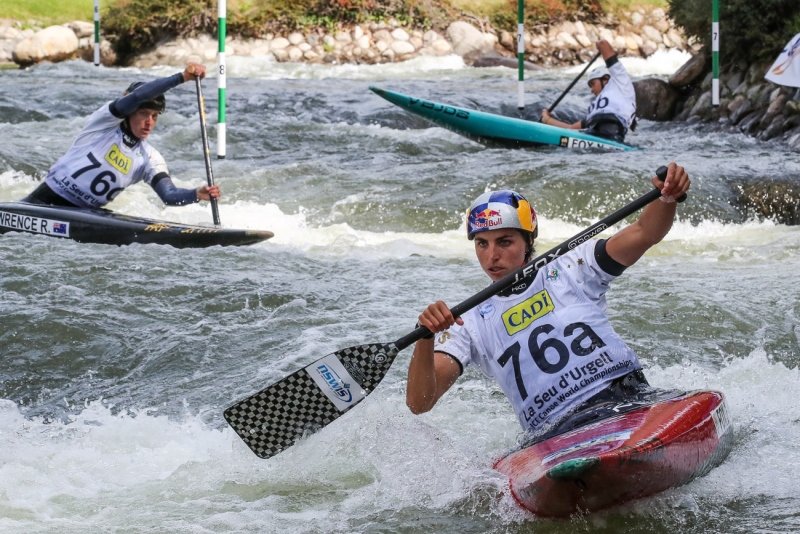
Technical breakdown
As mentioned, switching involves passing the paddle from one side of the boat to the other as quickly as possible. The main technique to doing so is to bring the top hand to meet the bottom hand, and then sliding the original bottom-hand to the T-piece at the top of the paddle. This ensures that there’s always at least on hand on the paddle, and you don’t have to “catch” the T-piece as you transition to the other top-hand.
Switching in the Modern era
To this day, many of the current Senior C1M opt to paddle only on one side during their training and competitions. At the 2023 Canoe Slalom World Championships, hosted in London, United Kingdom, just one of the athletes in the final switched: Lukas Rohan (CZE), finishing 4th place. But this is changing, in the 2023 Canoe Slalom World Championships final, in the U23 category, 50% of the C1M athletes opted to use at least 1 switch during their final run. Included in this was U23 World Championship silver medal winner Kurts Adams Rozentals(GBR). In Junior World Championship final, 70% of C1M athletes chose to switch during their run.
Furthermore, across all 3 C1W age categories (Senior, U23, and Junior), 100% of C1W in the 2023 World Championship finals chose to switch during their final run.
This is a clear vote of confidence by the new generation of Canoe Slalom athletes. It will be interesting to see how the World Championships finalist choose to use this technique in the late 2020’s and early 2030’, as the old generation is replaced by the new era. I expect there will still be many C1M who choose to not switch, but I believe the proportion of C1M who switch in Senior World Championship finals to increase dramatically.
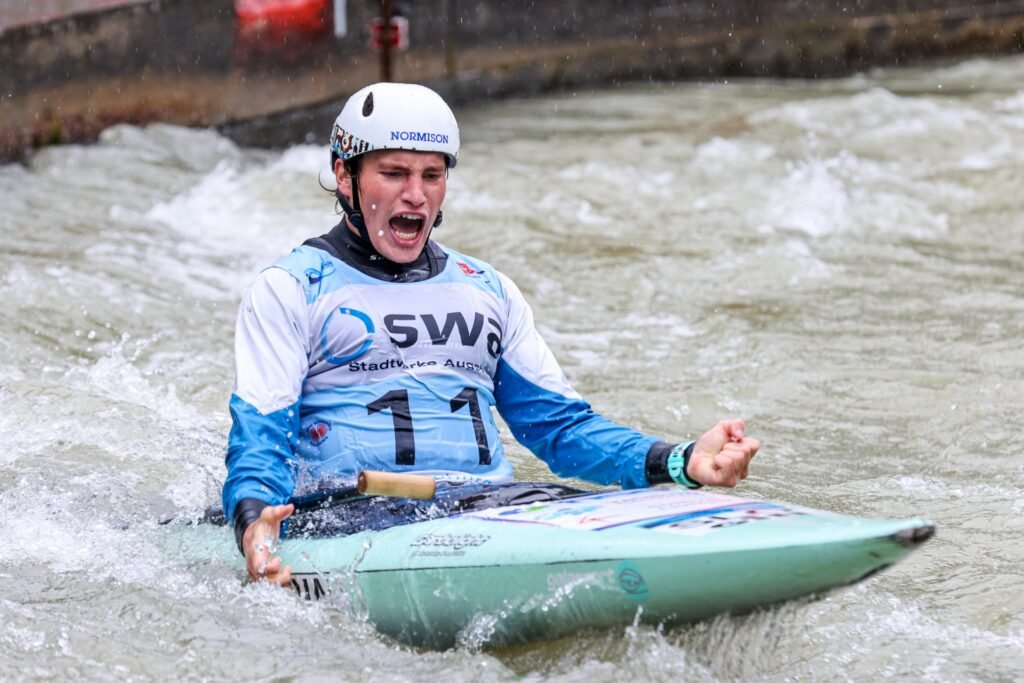
Criticisms and praise of this technique
The use of switching in the C1M category has been somewhat controversial. A quote from the commentators Frank Glieberand Bob Alexander at the 1979 World Championships commentated on this topic:
Frank Glieber: “How about his [Bob Robinson’s] technique, he goes from side to side. Is that unusual?”
Bob Alexander: “It used to be. The Americans started a new technique about four or five years ago and the Europeans laughed for quite a while until now the American are starting to end up in the top few places.”
Similarly, in a recent article on Planet Canoe in 2022, Michal Martikan (SVK), hailed by many as the greatest C1M athlete of all time, shared his criticisms of the switching technique:
“There are many paddlers who paddle very nice. But also, I don’t know if I can say that I am a bit disappointed, with switching the paddle like girls. Though, sometimes it looks nice and fast. But this is a big difference with our paddling a couple of years ago and now.“
Constrastingly, two other highly decorated C1M athletes have recently adopted switching in their mid-thirties, towards the end of their respective careers. Olympic Champion and World Champion Denis Gargaud-Chanut (FRA) and two-time World Champion and Olympic silver medallist David Florence (GBR)both chose to begin training and racing using switching in the later part of their careers (although David Florence retired at the beginning of 2022). Denis Gargaud-Chanut (FRA) has returned to the French Senior Team in 2024 so it will be interesting to see if he continues to switch this season.
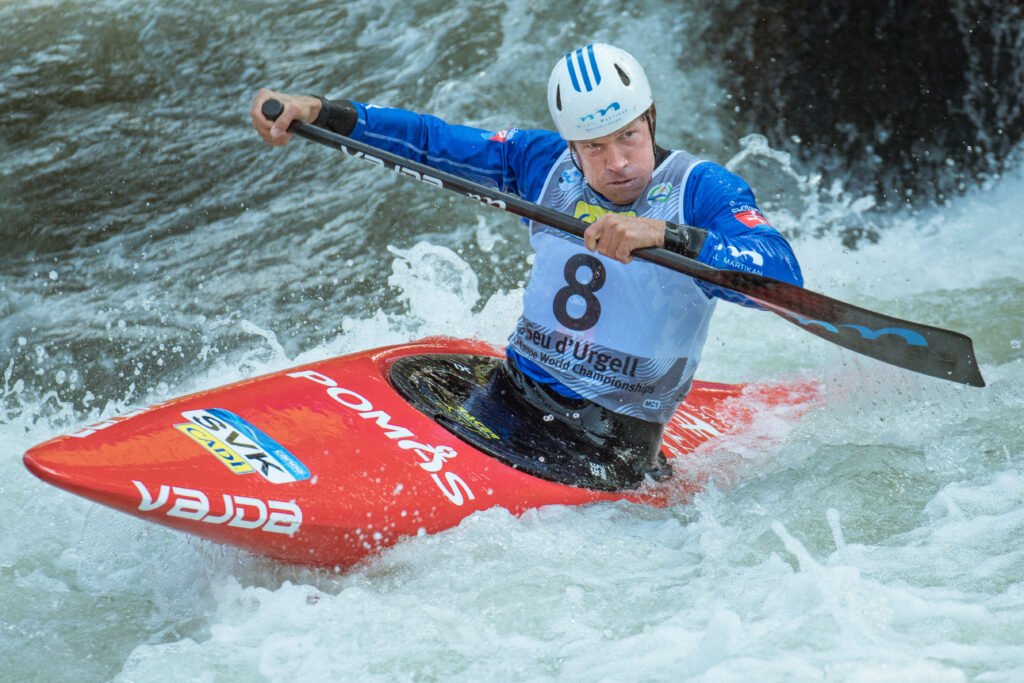
Whilst first seen in the 1970’s, switching has only been seriously adopted in the recent years of the modern era. The C1W category continues to evolve using this technique, and is being increasingly adopted by the C1M category, particularly amongst the new generation. A technique once laughed at by the Europeans has become a key aspect of canoe slalom technique for those competing in C1M and C1W in the modern era. It’s going to be interesting to see how this technique will look in the Canoe Slalom landscape over the coming years.
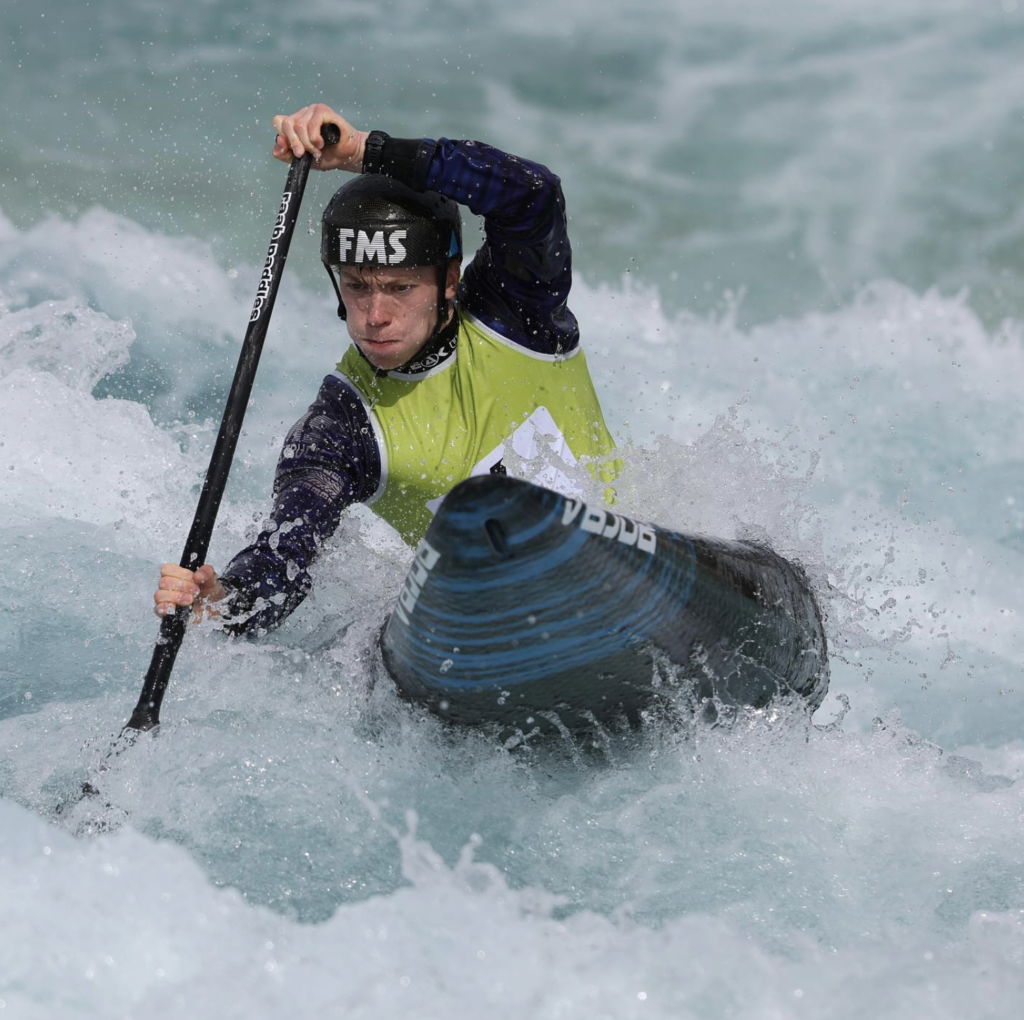
Author: LUC ROYLE – GB U23 TEAM ATHELTE
@luc_royle

